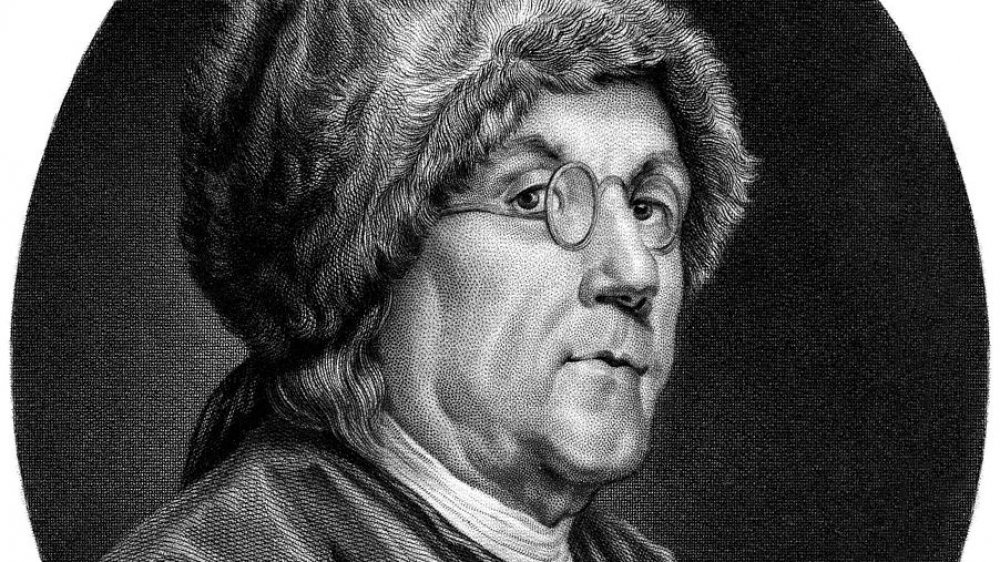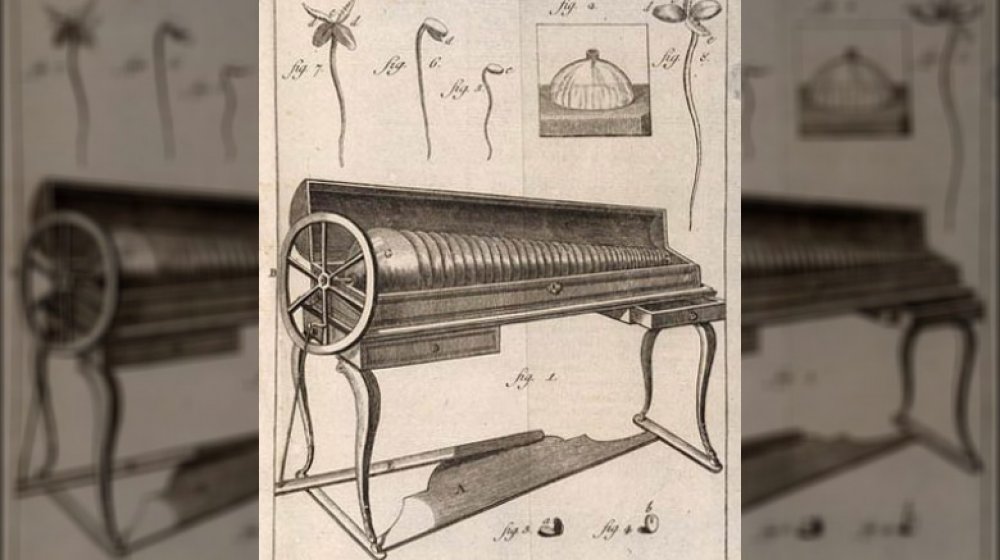The Truth About The Musical Instrument Benjamin Franklin Invented
Benjamin Franklin is generally considered a somewhat eccentric genius. The man's accomplishments span several different fields, according to Biography. He was a diplomat who helped negotiate the end of the American Revolution and effectively the first U.S. Ambassador to France. He was an abolitionist who owned slaves early in his life, but as his thinking rightfully evolved he freed them and in 1790 petitioned Congress to end slavery and the slave trade. He was one of the Founding Fathers of the United States, helping draft both the Declaration of Independence and the United States Constitution. He published newspapers, gave us aphorisms ("Early to bed and early to rise," and so forth), helped establish the first public library, and was our first Postmaster General. He also wrote his autobiography.
In the midst of all of this — and there's more — his mind was constantly at work, learning, exploring, developing, improving. The Franklin Stove was his invention, creating a way to move a heat source out of the fireplace in the wall and into the room itself, with more even and efficient warmth. Bifocals were his, too, as was the rocking chair.
Raise a glass to Franklin's 'glass armonica'
In the midst of all of this government, writing, and inventing beat the heart of a musician. PBS tells us that Franklin the inventor also played music — specifically, the viola da gamba, something like today's violin or viola — and also turned his talents to creating a new musical instrument, variously called the armonica, the glass armonica, or the glass harmonica. He had seen someone playing glasses — fingers rubbed along the rim to create a vibrating tone that varied depending on how much water was in the glass. Franklin, being Franklin, decided to improve things. His invention used glass hemispheres of varying sizes, color coding, and thicknesses to vary the tones, and a metal rod running through them. A foot treadle turned the spheres as the player's damp finger rubbed along the hemispheres' edges, producing the notes.
The instrument took off. Thousands were produced; even Queen Marie Antoinette had lessons on it. Mozart composed two pieces for it, and Beethoven wrote a short play in which the narrator was accompanied by an armonica. The armonica proved to be something of a flash-in-the-pan, however, and while some are still played today, its popularity had faded almost completely by the early 19th century. While Franklin's visage graces our $100 bill today, he isn't pictured playing an armonica, more's the pity.

